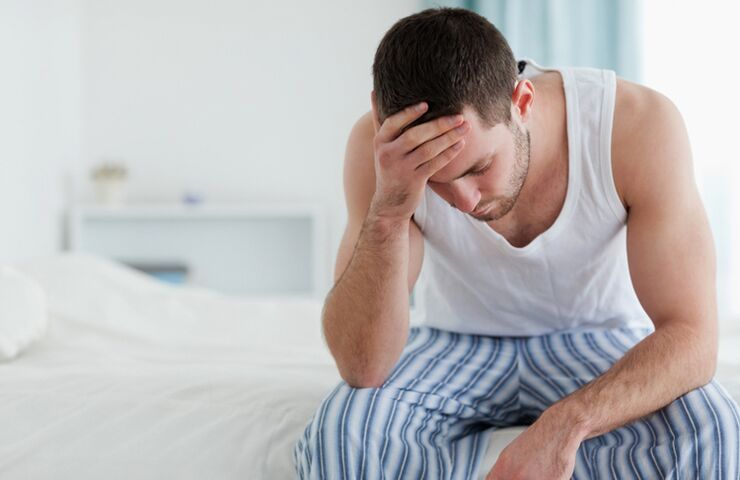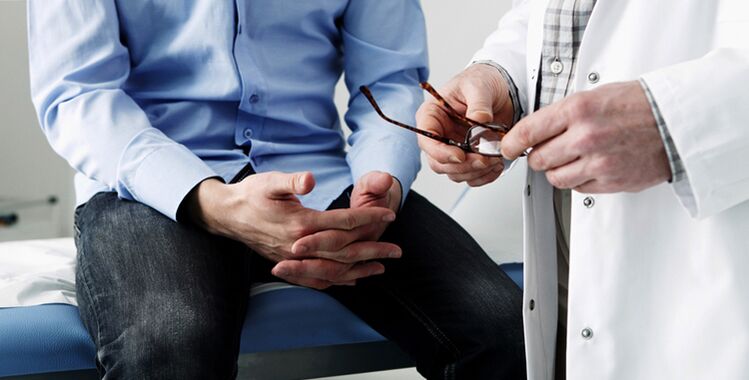The prostate is a gland in the male body. The normal parameter of a healthy organ is 2. 5-4. 5 cm long and 3-4 cm wide. It consists of glandular and muscle tissue and is formed at the age of 23, when the accumulation of hormones increases. Glandular or secretory tissue produces a special liquid (secret) that is released during ejaculation and is a component of semen.
The secret of the prostate has an alkaline reaction and provides the vital activity and mobility of spermatozoa, protecting them from the acidic environment of the vagina.
What is prostatitis?
This is an inflammation of the prostate gland, which is only found in the male body, and is involved in the production of male sex hormones. The ligament connects the gland to the pubic junction between the bones, its base converges with the bladder and surrounds the beginning of the urethra.
Located in the small pelvis, the prostate is separated from the rectum by a thin septum of connective tissue. This anatomical location of the prostate explains the complaints that appear when it becomes inflamed and enlarged. The gland presses on the urethra, thereby causing a poor outflow of urine.
Rectal compression causes constipation. The location close to the perineum causes pain in this area.
Allocate acute and chronic prostatitis.
Acute prostatitiscan be caused by various bacteria:
- Escherichia coli.
- Staphylococcus aureus.
- Enterococcus.
- Pseudomonas aeruginosa.
- Enterobacteriaceae.
The presence of this pathogen in the body of a healthy person is natural and harmless. But with a decrease in immunity, bacteria are activated, penetrate into the tissue of the gland and cause an acute inflammatory process, it is shown:
- Increased temperature, both the whole body and the rectum (in the rectum). In addition, rectal temperature is often higher than in the axillary region.
- Complaints of chills, fever.
- The appearance of pain in the groin, scrotum, anus.
- Frequent pain (spasms, burning) urination. Urges become more frequent at night.
- General poisoning. Weakness, pain in muscles and joints, headache.
- Change in urine color. It becomes cloudy, sometimes with an admixture of blood.
- Discharge from the urethra.

A sluggish or prolonged acute process that lasts more than 3 months leads tochronic form.It is characterized by:
- Pain in the genital area.
- Urinary disorders.
- Sexual harassment.
Main reason
- Urinary tract infection. For a long time, they can go unnoticed. The normal microflora of the genitourinary system overcomes the pathogenic flora for some time. But as a result of hypothermia or any other unfavorable conditions, aggressive microflora begins to dominate and inflammation begins.
- congestion in the prostateis a significant risk factor. Inactive lifestyle, hemorrhoids, constipation - these factors lead to blood stagnation. Updated oxygenated arterial blood almost no longer flows into the pelvic organs. Intracellular respiration decreases and infection becomes the sovereign mistress.
- Irregular sex life, - when the period of increased sexual activity is replaced by prolonged abstinence. Frequent ejaculation, as well as its limitation, leads to stress and dysfunction of the secretory function. Together with the above reasons, this provides the prerequisites for starting the inflammatory process.
- Obesity. Metabolism is disrupted, which leads to atherosclerosis and cholesterol deposition.
- hypothermiacan cause a decrease in immunity.
- Alcohol and tobacco abuseleading to narrowing of the large duct that feeds the prostate.
- Lack of physical activitydoes not allow the muscles of the prostate gland to function and completely remove the secret.
The first signs of prostatitis in men
- Weak flow of urine with short distances.
- Difficulty urinating with pain.
- Intermittent flow.
- Prolonged urination.
- Incomplete bladder emptying.
- Frequent night calls.
Symptoms and signs
There are two phases in symptoms: latent (hidden) and active. In the latent phase, which can last for years, there are almost no complaints. There is slight discomfort in the scrotum, anus or glans penis.
Men try to ignore it or write it off as too much work. Over time, the pain increases, it becomes more difficult to empty the bladder. This indicates that the latent phase turns into active, inflammation begins to develop and obvious signs of the disease appear:
- An unpleasant sensation during the act of defecation.
- A strong discharge from the urethra during stool.
- Burning in perineum and urethra.
- Visible problems with potential.
- Rapid ejaculation.
- The bladder is partially emptied and with difficulty.
- Psychological problems.
- Frequent and painful urination with filamentous discharge.
- The process of emergence of erection becomes long.
Diagnostics
- Collection of anamnesis. The doctor knows all the complaints made by the patient. Time of first symptom. Presence of other diseases. Knowing the details of sexual activity, the presence of a regular partner and other information necessary for an accurate diagnosis.
- Rectal examination of the prostate. Before the examination, the patient is given a microclyster to clean the intestines. Palpation examination allows you to determine the increase and pain of organs. As a result of the prostate massage, part of the secret is removed, which is submitted to the laboratory for research. The results allow you to determine the microflora of the gland and the sensitivity of pathogenic microorganisms to drugs.
- ultrasound. This examination determines the size of the prostate gland, its density and structure. For a more detailed examination, transrectal ultrasound is used. The end of the device is inserted into the rectum, which makes it possible to examine part of the intestine and the seminal canal.
- Cystoscopy. This procedure is performed using an endoscope. A thin probe with a camera is inserted into the urethra, which makes it possible to see the bladder and glands on the screen. According to the indications, they can take a biopsy (tissue sampling for analysis).

Laboratory studies are also carried out:
- General blood test (increased number of leukocytes).
- Urinalysis (leukocytes, erythrocytes and protein are present in the sample).
- Bakposev on the microflora taken from the urethra (sensitivity to antibiotics is determined).
- Sperm analysis (motility, activity and accumulation of spermatozoa, state of reproductive function).
Methods and schemes for the treatment of prostatitis
Treatment is complex. Includes preparation of different directions and actions, as well as massage, physiotherapy and therapeutic exercises.
Prescribed medication:
- Broad spectrum antibiotics (affects pathogenic microflora).
- Alpha blockers normalize urine output, increase blood flow to the pelvic organs, and reduce pain.
- Relax the muscles.
Treatment also includes:
- Prostate massage (helps eliminate fluid retention and swelling). Acute infectious prostatitis is a contraindication for the procedure.
- Physiotherapy (electrophoresis, electrical stimulation, magnetic and laser therapy).
- Physiotherapy.
Only a doctor can prescribe medication after receiving this test!
Prevention
- To avoid prostatitis, it is recommended to live a mobile lifestyle. Walking, running, swimming, tennis are all good for health. Strength sports and cycling should be limited.
- Dieting. Eat foods high in vitamins and minerals. Do not abuse alcohol and nicotine, limit the use of pickles and smoked meat.
- Be careful in choosing a sexual partner to avoid sexually transmitted infections.
- Fixed sex life.
Compliance with these simple preventive measures will allow you to maintain health for many years.























